A losing battle with Box Tree Moth Caterpillars gave rise to a costly garden project.
Towards the end of May last year, when the two mature box (buxus) hedges at the front of our house should have been sprouting new leaves, I noticed that barren patches were starting to appear. These hedges were planted 20 years ago and provide attractive green borders for two miniature gardens, so the sudden change in their appearance was worrying.
You Can Lose Your Box Hedges in a Fortnight!
I had heard on the news that box tree moth caterpillars were spreading rapidly in the UK, so I peered inside the hedges to take a closer look at what was going on. To my horror, I found dozens of these bright green and black menaces munching away on the leaves. Around 30% of our hedges had already been stripped of all their greenery before I had even realised what was happening. My grandson loves the children’s story “The Very Hungry Caterpillar” – I wanted to show him a real life version, but I guess he might have found this a bit scary!
Box caterpillars not only consume leaves very quickly, but they also produce cobweb-like webbing in the hedges to protect themselves. These make the hedges look very unsightly.
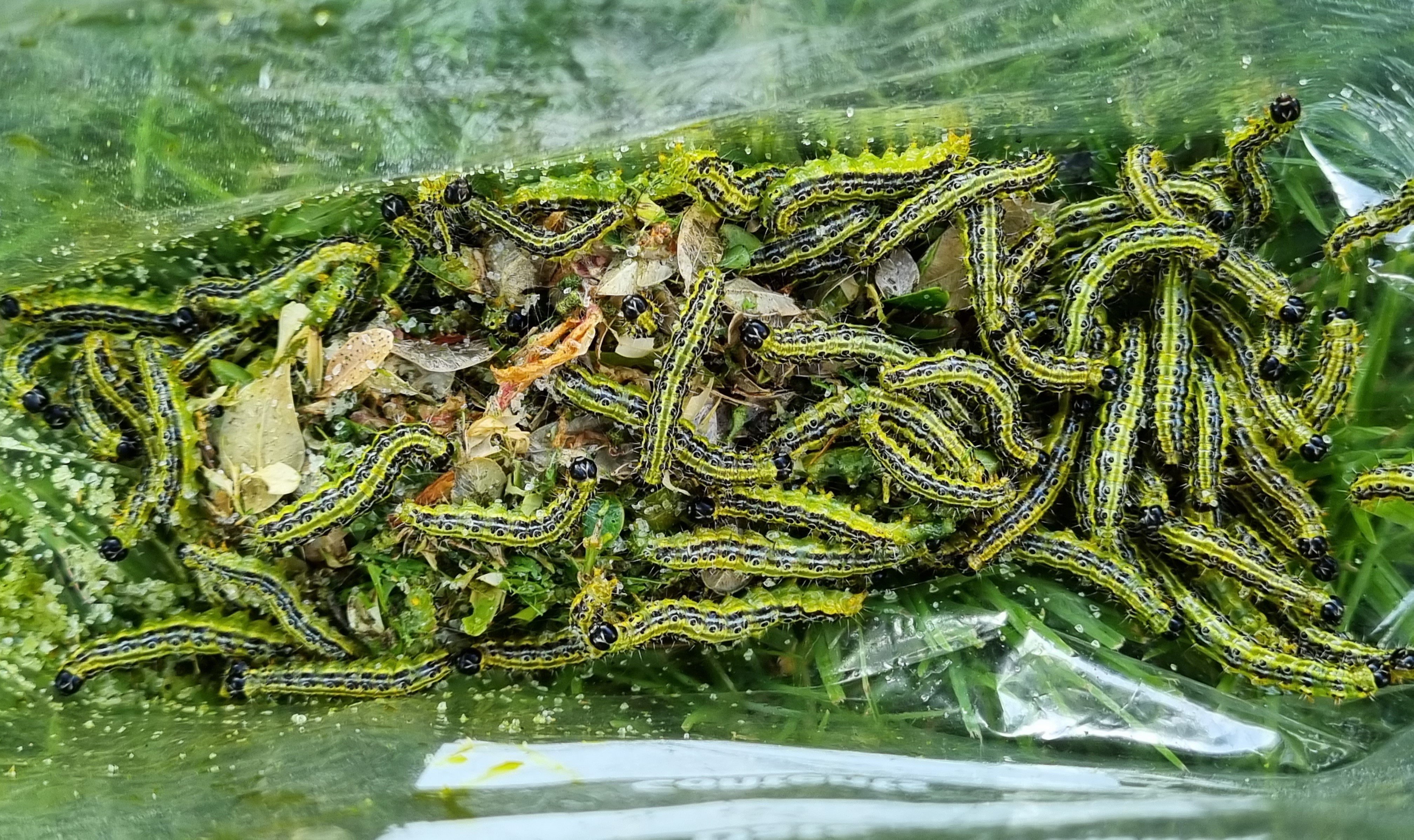
If left undisturbed, it doesn’t take very long at all for box tree moth caterpillars to decimate box hedges, so I knew I had to act swiftly to try to save our hedges. I spent a couple of hours delving inside both of the hedges to pick off the caterpillars by hand, one by one. Not a very enjoyable task, and one best done wearing thin gardening gloves! But for sure there must have been many that I didn’t catch.
Control Box Caterpillars with XenTari
Next, I did some research into how to get rid of these pests more permanently. I was guided to buy a biological insecticide called TopBuxus XenTari (about £20 on Amazon). This does not harm humans, wildlife or the environment (according to the manufacturers). XenTari comes in little sachets of brown powder which you mix with water and apply liberally all over your affected box hedges with a spray gun.
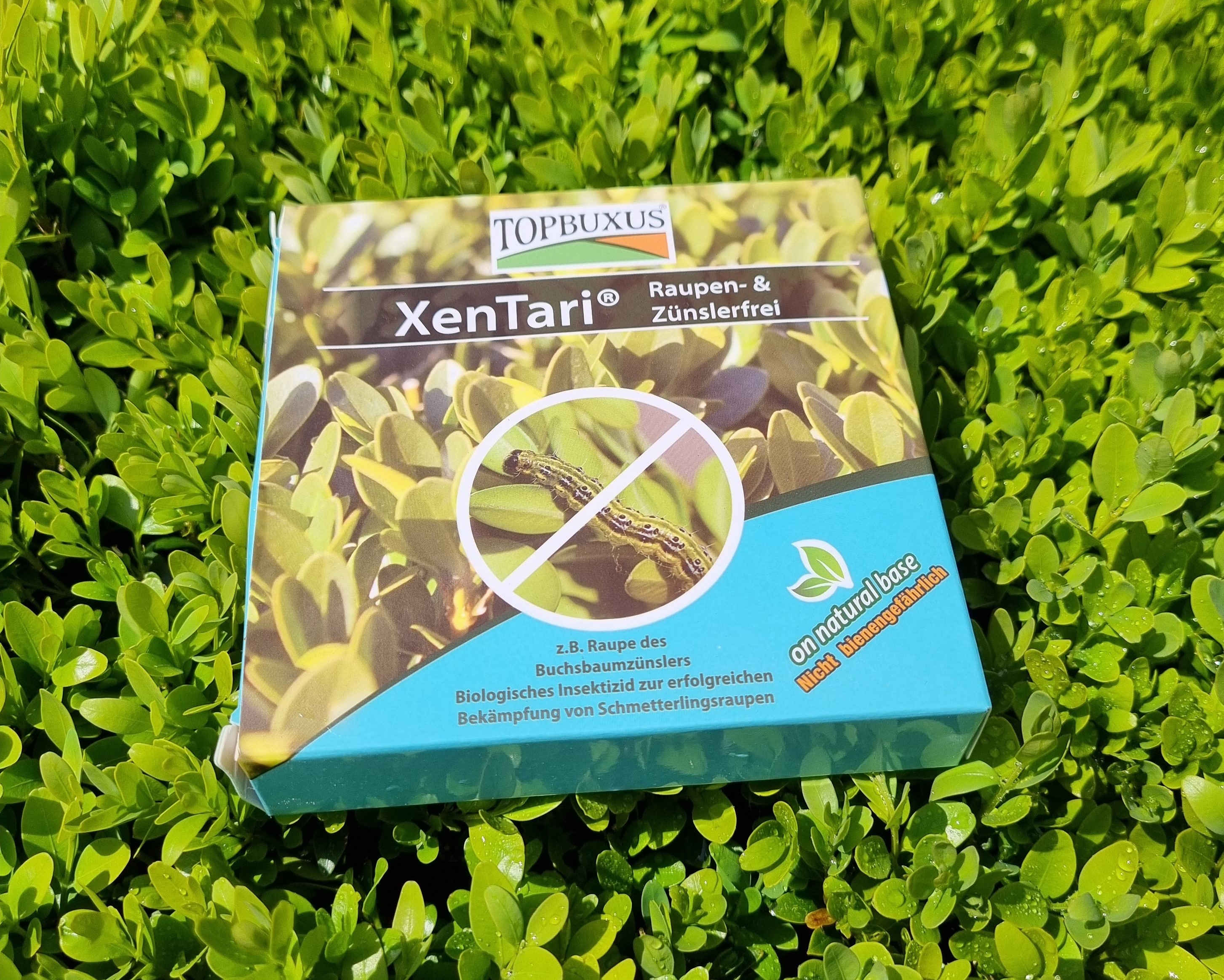
I did a couple more applications of XenTari as directed by the manufacturers but although the treatments looked to have slowed the progress of the box caterpillars, I was still seeing the patches of decimated hedge grow bigger. By the end of the growing season close to 50% of the hedging had been stripped of its leaves. They were now looking really horrible – half green and half brown, with a mass of “webbing tents” throughout.
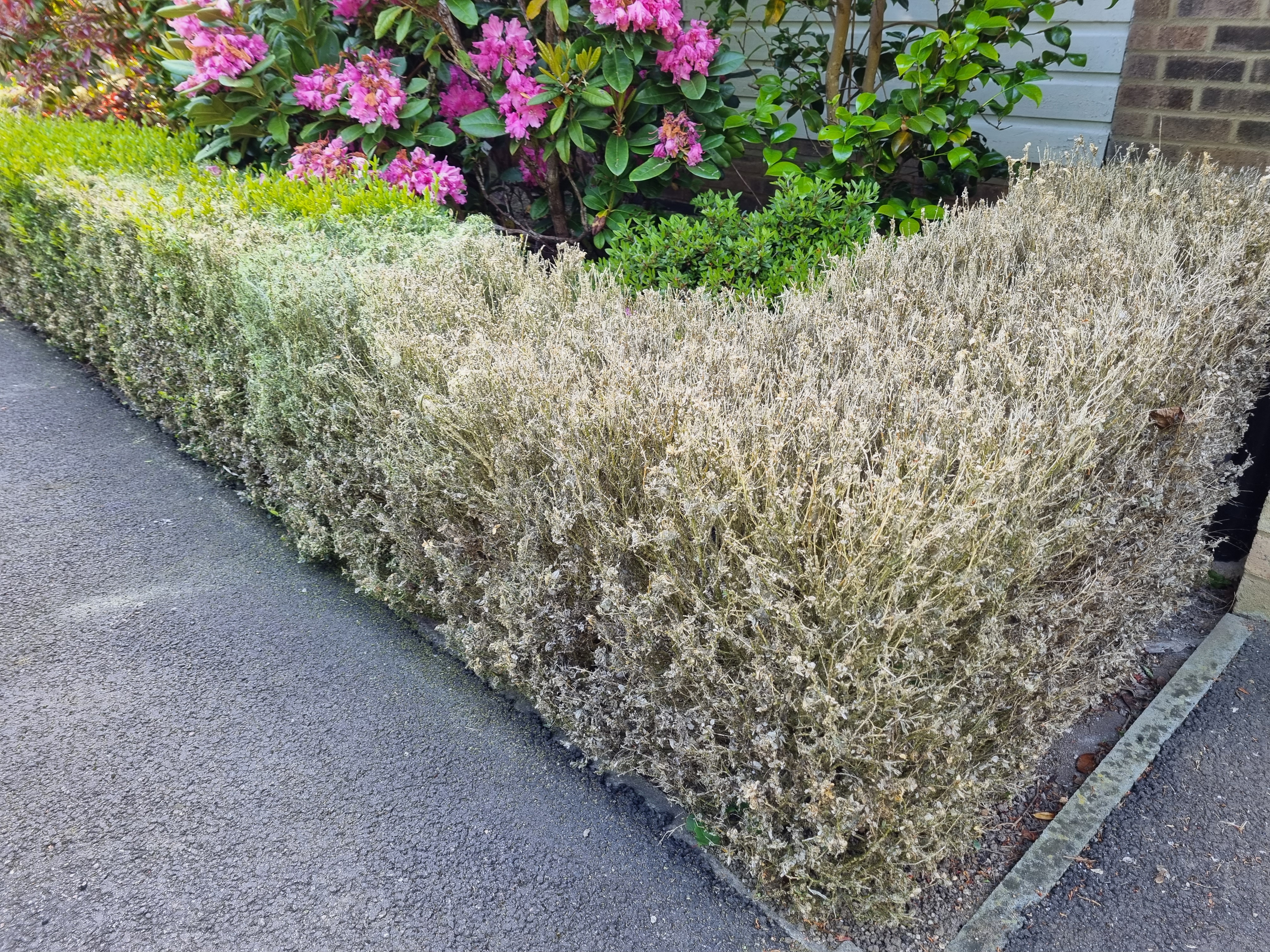
Half Dead Box Hedges – Not a Pretty Sight
Some gardening experts say that box hedges that have been totally defoliated by box tree moth caterpillars can recover, given time, so I decided to leave them for a year to see if this would happen. Alas it did not. Having been left by the box caterpillars with a pair of unsightly half dead hedges, I wondered what to do next. I considered four options:
- Remove the damaged plants and replace them with new ones.
- Replace the damaged plants with Ilex Crenata or Euonymus Japonicus “Green Spire,” which are quite similar in appearance to box, but not currently on the menu of the box tree moth caterpillar.
- Pull out all the hedging and leave the miniature gardens without a protective wall.
- Build a pair of low brick walls to replace the hedges.
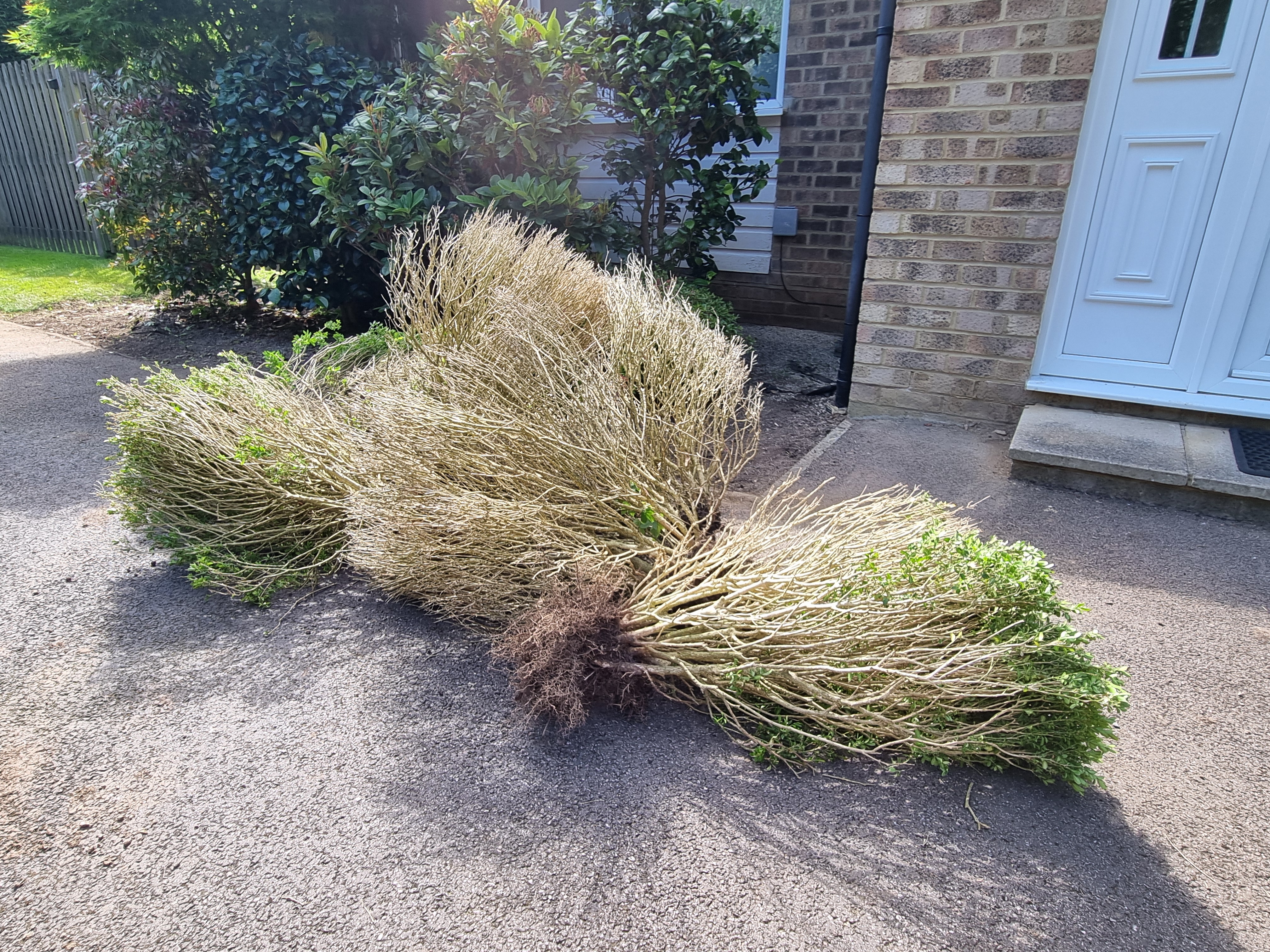
A Sad Day
As you can see from the picture, I decided that keeping box tree moth caterpillars at bay was ultimately going to be a losing battle. I didn’t relish having to fight these hungry critters year after year, so out went the once beautiful hedges – 25 mature box plants in all. It was quite a sad moment, losing this once beautiful mature hedging.
Getting the damaged plants out of the ground was easy, but the healthy ones proved quite tough to remove. I managed to break a garden spade and a garden fork in the process!
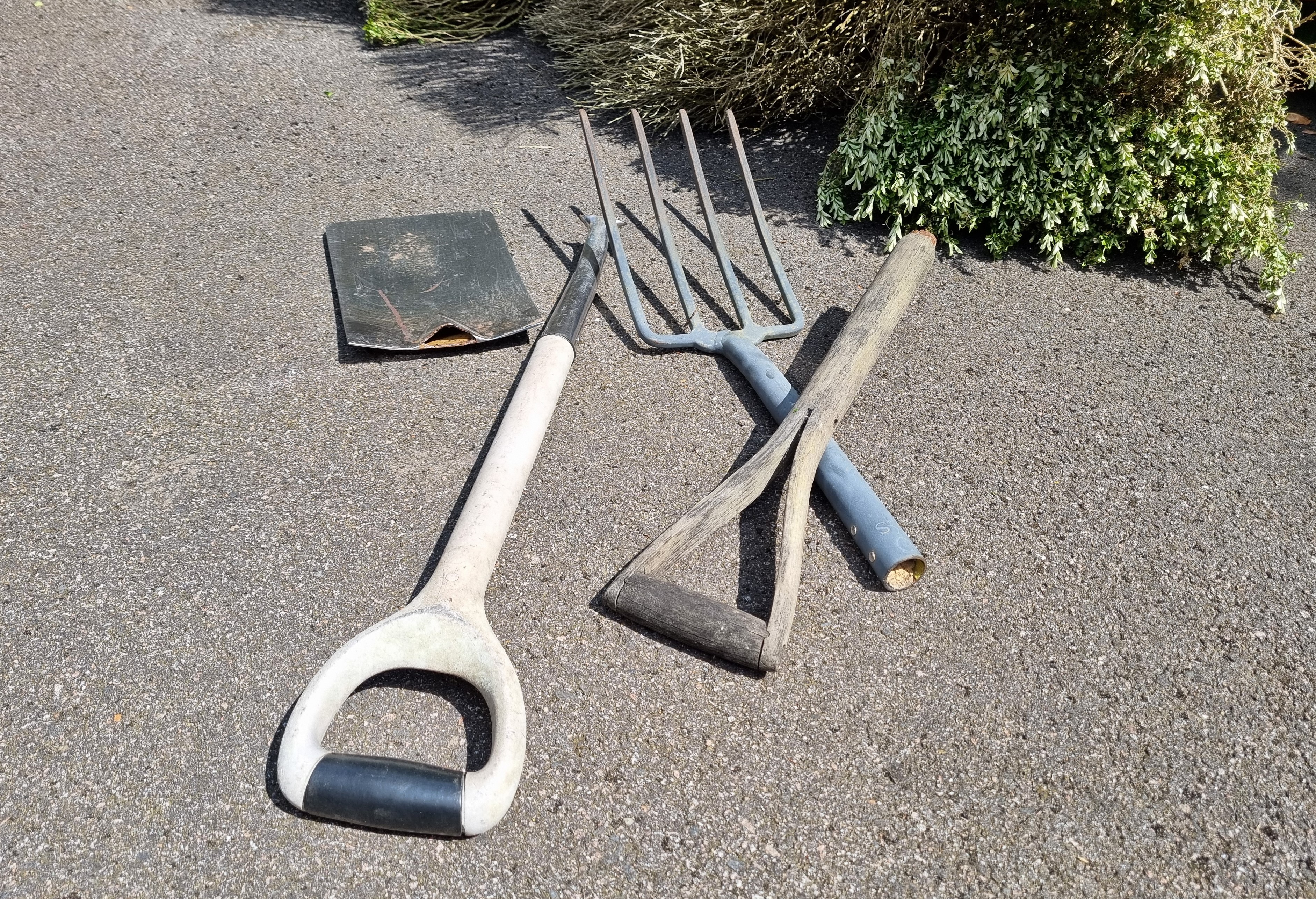
New Brick Walls
I decided on the last option – get a couple of low brick walls built. Sadly, not the cheapest or the greenest option, but the one which will require the least maintenance in the years ahead. Having seen at first hand what a formidable enemy the box tree moth caterpillar is, I decided that I’m not up for the fight.
I engaged the services of a local bricklayer to build the walls using Burford Garden Walling (Golden Buff). These were pretty costly bricks at £419 for a pallet load, and bricklayers don’t come cheap! You can be the judge of whether he did a good job.
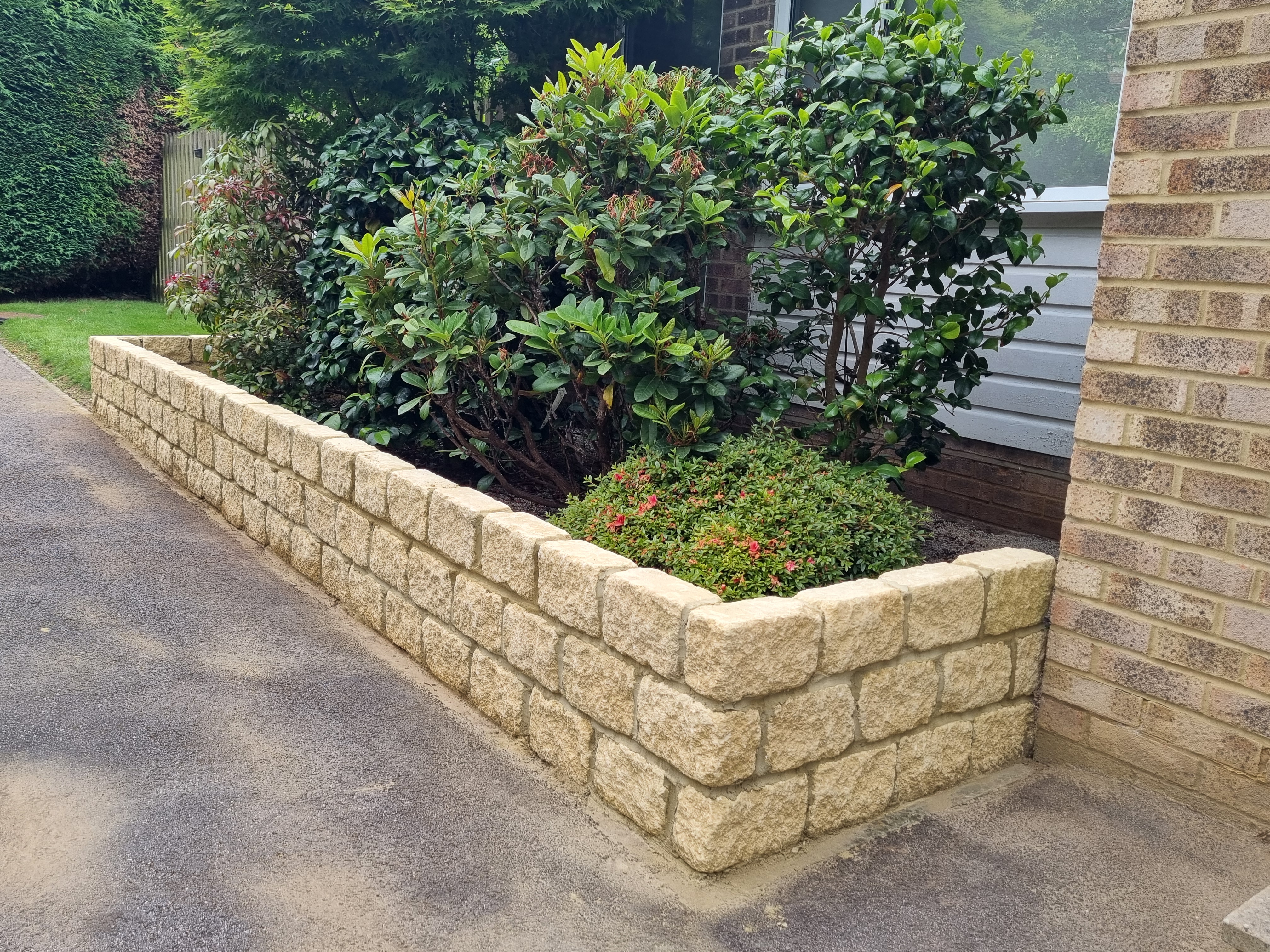
Keep a Close Eye on your Box Hedges
It only takes around 6 weeks for the box caterpillar to complete its lifecycle and there can be two generations of these pests a year. If you have box plants or box hedges in your garden my advice would be to keep a really close eye on things from March through to October. Look at and inside your box hedges for evidence of their activity at least once a week – the presence of webbing is usually a good indicator.
If you’re unfortunate enough to find that box caterpillars are present in your hedges you’re likely to have quite a tough job getting rid of them. Best to keep a supply of XenTari close at hand.


